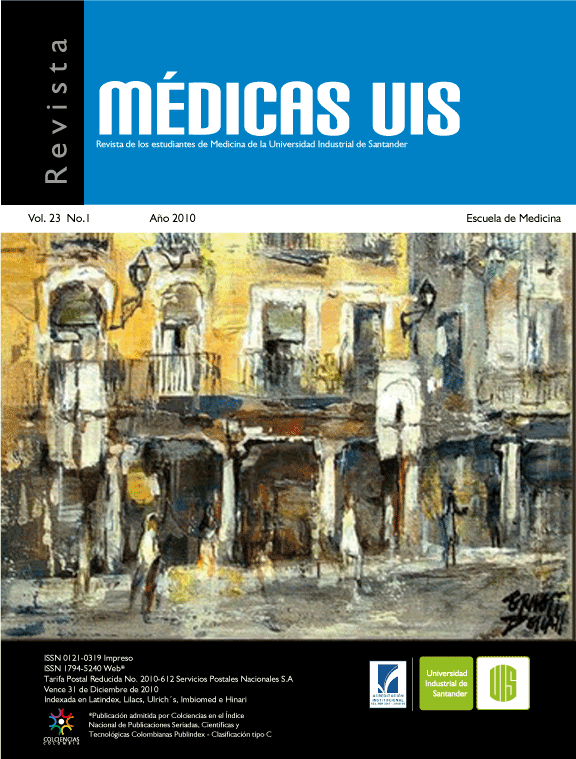Abstract
INTRODUCTION: Central venous trombosis in adults in the complejo hospitalario-universitario de A Coruña Spain. Clinic-radiology review of 48 cases between 1955 and 2005. Introduction. Cerebral venous thrombosis is a pathology of the central nervous system which incident is still unknown. The diagnosis is difficult because the neurological manifestations and its etiology may be extremely varied.
OBJECTIVES: The aim of our study was to ascertain the etiology, the clinical manifestations and the prognosis of the cases of Cerebral venous thrombosis diagnosed at our Hospital. Patients and Methods. It was reviewed retrospectively all histories of the patients who were diagnosed of cerebral venous thrombosis from 1995 to 2005. It was recorded the etiological factors, the clinical manifestations, the radiological signs in the computed tomography scan at admission, the treatment administered and the prognosis at six months was classified in accordance with the modified Rankin scale (mRS).
RESULTS: We reviewed 48 cases (27 females; 21 males). The age range was 21 to 88 years old, with a median at 43 years. The infectious etiology was present in five patients (10,4%). In the young group (<43years), coagulation diseases and/or oral hormone contraceptives were involved in 66,7% of the cases, whereas in the age group (≥43 years), an underlying neoplasm was identified in 29% of the cases and no etiological factor in 45,8%. Headache was the most frequent symptom (72,9%). The most frequently observed radiological sign in the computed tomography scan was hyperdensity in one or more venous sinuses (62.5%), but it was normal in 20% of the cases. 34 patients received anticoagulant treatment with a good evolution, so 75% presented mRS ≤1 at six months. Death occurred in 8 patients (16,7%), although it was closely related to their basic condition (50% neoplasm).
CONCLUSIONS: In young population, the most frequently etiologies are contraceptives and coagulation disease and in people older than 60 years, the underlying neoplasm and cases of unknown etiology prevail. The anticoagulant treatment is effective and safe. The prognosis was excellent in the most of the cases.
Key words: Cerebral venous thrombosis. Venous sinuses. Stroke. Anticoagulant. Heparin. Prognosis.
References
2. Ameri A, Bousser MG. Cerebral venous thrombosis. Neurol Clin 1992;10:87-111.
3. Daif A, Awada A, Al-Rajeh S, Abduljabbar M, Al Tahan AR, Obeid T, et al T. Cerebral venous thrombosis in adults. A study of 40 cases from Saudi Arabia. Stroke 1995; 26:1193-5.
4. Bousser MG. Cerebral venous trombosis: diagnosis and management. J Neurol 2000;247:252-8.
5. Bousser MG, Barnett HJM. Cerebral venous trombosis. En: Mohr, Choi, Grotta, Weir, Wolf, editores. Stroke: Pathophysiology, Diagnosis, and management. Fourth edition. Churchill Livingstone 2004;301-25.
6. Preter M, Tzourio T, Ameri A, Bousser MG. Long-term prognosis in cerebral venous trombosis. Follow-up of 77 patients. Stroke 1996;27:243-6.
7. de Bruijn SFTM, de Haan RJ, Stam J, for the Cerebral Venous Sinus Trombosis Study Group. Clinical features and prognostic factors of cerebral venous sinus thrombosis in a prospective series of 590 patients. J Neurol Neurosurg Psychiatry 2001;70:105-8.
8. Bousser MG. Cerebral venous thrombosis. Nothing, heparin or local thrombolysis?. Stroke 1999;30:481-3.
9. Benamer HT, Bone I. Cerebral venous trombosis: anticoagulants or thrombolitic therapy?. J Neurol Neurosurg Psychiatry 2000;69:427-30.
10. Hillier CE, Collins PW, Bowen DJ, Bowley S, Wiles CM. Inherited prothrombotic risk factors and cerebral venous thrombosis. QJM 1998;91:667-80.
11. Cantu C, Alonso E, Jara A. Hyperhomocisteinemia, low folate and vitamin B12 concentrations, and methylene tetrahydrofolate reductase mutation in cerebral venous trombosis. Stroke 2004;35:1790-4.
